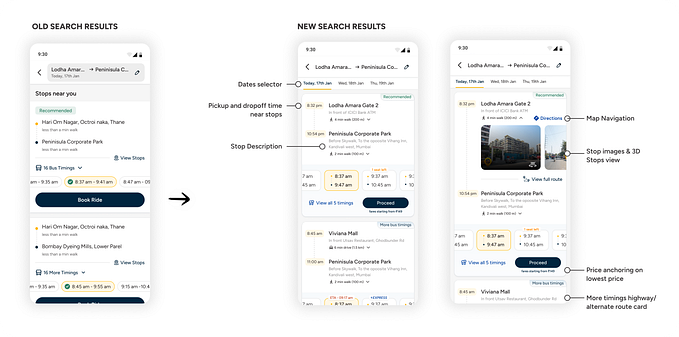UX/UI case study: longterm engagement with a smart home assistant

The Challange:
Smart home devices like tado°, a smart thermostat to control your heating system, are installed permanently in the home. But often they have a hard time really engaging their users in the long run.
With IoT products becoming more service centred creating a sustainable interaction with the user is a significant challenge for design, since revenues are depending on users drawing continuous value from a service instead of just an initial purchase.
How might we increase long term engagement with the smart thermostat tado° through new features?

The Problem
About 90% of our life is being spent inside. Besides temperature, other components like air quality are essential for staying healthy and comfortable. Our indoor air can be up to 5 times more polluted than the air outside. Nevertheless, an unhealthy indoor environment is an often overlooked problem.
How could a tado° assistant for the indoor climate provide sufficient support to create valuable touchpoints with users?

User Research
I spoke to people in different living situations to find out more about their comfort at home as well as their habits regarding heating and ventilation. I wanted to learn about the most important pain points and user needs to consider.


User Quotes:
“Dust makes me super uncomfortable because I have allergies and try to keep everything clean to make it better.“
“I have a problem with humidity in my bedroom, especially in winter, which is why I am quite conscious of avoiding mold.“
“I never really thought about air quality in general besides humidity and mold. How unhealthy can it be for myself, could it be as bad as smoking?“
“Sleep is an important topic for me. I open my windows before I go to bed because it helps me to fall asleep.“

Use cases for the assistant:
While many users have a pragmatic view on the topic or want to track a specific problem they have experienced (like dry, humid or polluted air), a potential solution also needs to consider emotional needs next to functional ones. A tool like this is a lot about giving people peace of mind, reassurance and a positive feeling about their home and lifestyle.

Creating a positive relationship with users over time:
The assistant app should deliver an engaging experience over time. To find out which products people have been using for a long time and why those are so well integrated into their lives I conducted more user interviews. Are there universal qualities across those different products and contexts that encourage engagement and can be applied to my concept?
I asked people about what digital products they have been interacting with for at least a year or even multiple years.
User Quotes:
“I could never ever delete Spotify, it has all my favorite music saved. I have some ethical problems with Spotify — but still feel like I have a positive relationship with it.“
“I have used Wunderlist for a long time. But only in phases. Whenever I feel like I need to get some control in my life, like now when I have to write my thesis at school
“I don’t even want to admit it — Candy Crush. Sometimes not at all and sometimes I play it all day long.“
Insights
A “longterm product“ does not have to be used everyday, there can be less frequent routines for usage including up and down times. But after all every one of those products manages to keep in touch without annoying the user.
Some aspects of engaging products that I want to consider for my solution:

User experience and engagement are not static variables. Needs are changing over time and the assistant has to address those in order to help users adopt the product into their life.

The solution:
- Wireframing: Several approaches to design a smart assistant were explored on a wireframe level. Through iterative user testing I improved my concept.

2. UI Design & prototyping : The final concept aims to be adaptable to changing needs during different stages of usage. A conversational layer connected to all features gives the assistant the possibility to reach out to the user and provide in-context help to increase engagement.
The assistant should over time get to know the user and learn to show interesting content, send notifications in the right moment and reach out with relevant information.

An adaptable homescreen to suit changing needs over time: with a busy life a simple status is often enough — but during early stages of usage or if an unknown problem occurs the user can access detailed information:

Making annoying little tasks like opening your windows regularly and creating healthy habits easier through motivation and tangible goals:

Improving the overall experience of the other more static features with personalized and context-sensitive information.
The assistant reaches out in a subtle way in order not to annoy the user:

Collecting and presenting data within an explorative tool to encourage new learnings. While detailed numbers are not interesting to most people for this topic, I learned that being able to spot changes and developments is what matters to users:

3. Visual Design: An illustrative and playful approach to visual design helps to emotionalize the dry subject of heating and ventilation. The underlying topic that should be communicated is the feeling of comfort at home.

Conclusion: Keeping a human-centered perspective on engagemet
Often strategies for encouraging engagement focus a lot on getting the user’s attention and trying to make sure users invest as much time as possible. But people’s lives are being occupied by an increasing amount of digital tools that require attention.
The principle “humans not users“ has been becoming more and more relevant for design and technology. Tado° can respect users as humans with a complex life by trying to fit into the mental space that people have for daily chores like heating and ventilation in the best possible way instead of asking for more attention and intruding into other areas of life.

Thanks for reading! Find the full project on katjaniggl.com. If you have questions or feedback for me or simply want to chat, don’t hesitate to reach out :)
This concept was created as my bachelor thesis at Munich University of Applied Sciences under the guidance of Professor Matthias Edler-Golla in collaboration with tado°. Thanks for the support and help at tado° to Jens Pohl, Felix Reichle and Zhu Yang.








